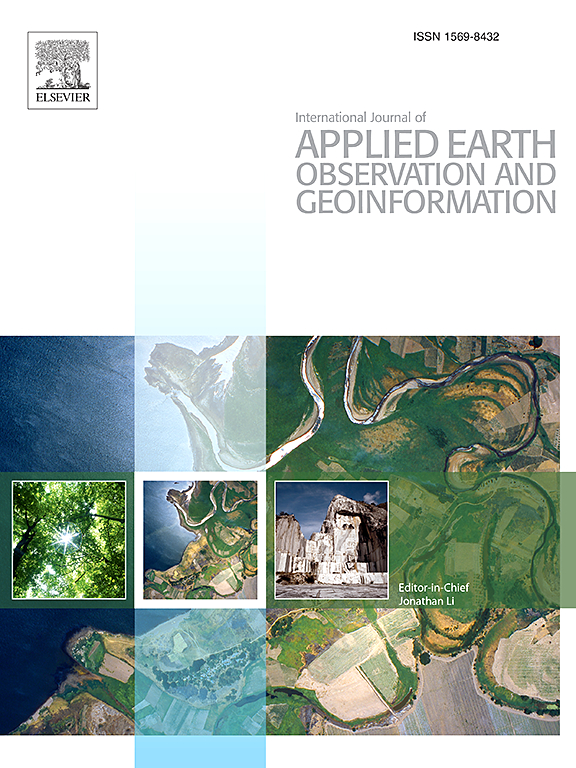Dual Fine-Grained network with frequency Transformer for change detection on remote sensing images
IF 7.6
Q1 REMOTE SENSING
International journal of applied earth observation and geoinformation : ITC journal
Pub Date : 2025-02-01
DOI:10.1016/j.jag.2025.104393
引用次数: 0
Abstract
Change detection is a fundamental yet challenging task in remote sensing, crucial for monitoring urban expansion, land use changes, and environmental dynamics. However, compared with common color images, objects in remote sensing images exhibit minimal interclass variation and significant intraclass variation in the spectral dimension, with obvious scale inconsistency in the spatial dimension. Change detection complexity presents significant challenges, including differentiating similar objects, accounting for scale variations, and identifying pseudo changes. This research introduces a dual fine-grained network with a frequency Transformer (named as FTransDF-Net) to address the above issues. Specifically, for small-scale and approximate spectral ground objects, the network employs an encoder-decoder architecture consisting of dual fine-grained gated (DFG) modules. This enables the extraction and fusion of fine-grained level information in dual dimensions of features, facilitating a comprehensive analysis of their differences and correlations. As a result, a dynamic fusion representation of salient information is achieved. Additionally, we develop a lightweight frequency transformer (LFT) with minimal parameters for detecting large-scale ground objects that undergo significant changes over time. This is achieved by incorporating a frequency attention (FA) module, which utilizes Fourier transform to model long-range dependencies and combines global adaptive attentive features with multi-level fine-grained features. Our comparative experiments across four publicly available datasets demonstrate that FTransDF-Net reaches advanced results. Importantly, it outperforms the leading comparison method by 1.23% and 2.46% regarding IoU metrics concerning CDD and DSIFN, respectively. Furthermore, efficacy for each module is substantiated through ablation experiments. The code is accessible on https://github.com/LeeThrzz/FTrans-DF-Net.
求助全文
约1分钟内获得全文
求助全文
来源期刊

International journal of applied earth observation and geoinformation : ITC journal
Global and Planetary Change, Management, Monitoring, Policy and Law, Earth-Surface Processes, Computers in Earth Sciences
CiteScore
12.00
自引率
0.00%
发文量
0
审稿时长
77 days
期刊介绍:
The International Journal of Applied Earth Observation and Geoinformation publishes original papers that utilize earth observation data for natural resource and environmental inventory and management. These data primarily originate from remote sensing platforms, including satellites and aircraft, supplemented by surface and subsurface measurements. Addressing natural resources such as forests, agricultural land, soils, and water, as well as environmental concerns like biodiversity, land degradation, and hazards, the journal explores conceptual and data-driven approaches. It covers geoinformation themes like capturing, databasing, visualization, interpretation, data quality, and spatial uncertainty.
 求助内容:
求助内容: 应助结果提醒方式:
应助结果提醒方式:


